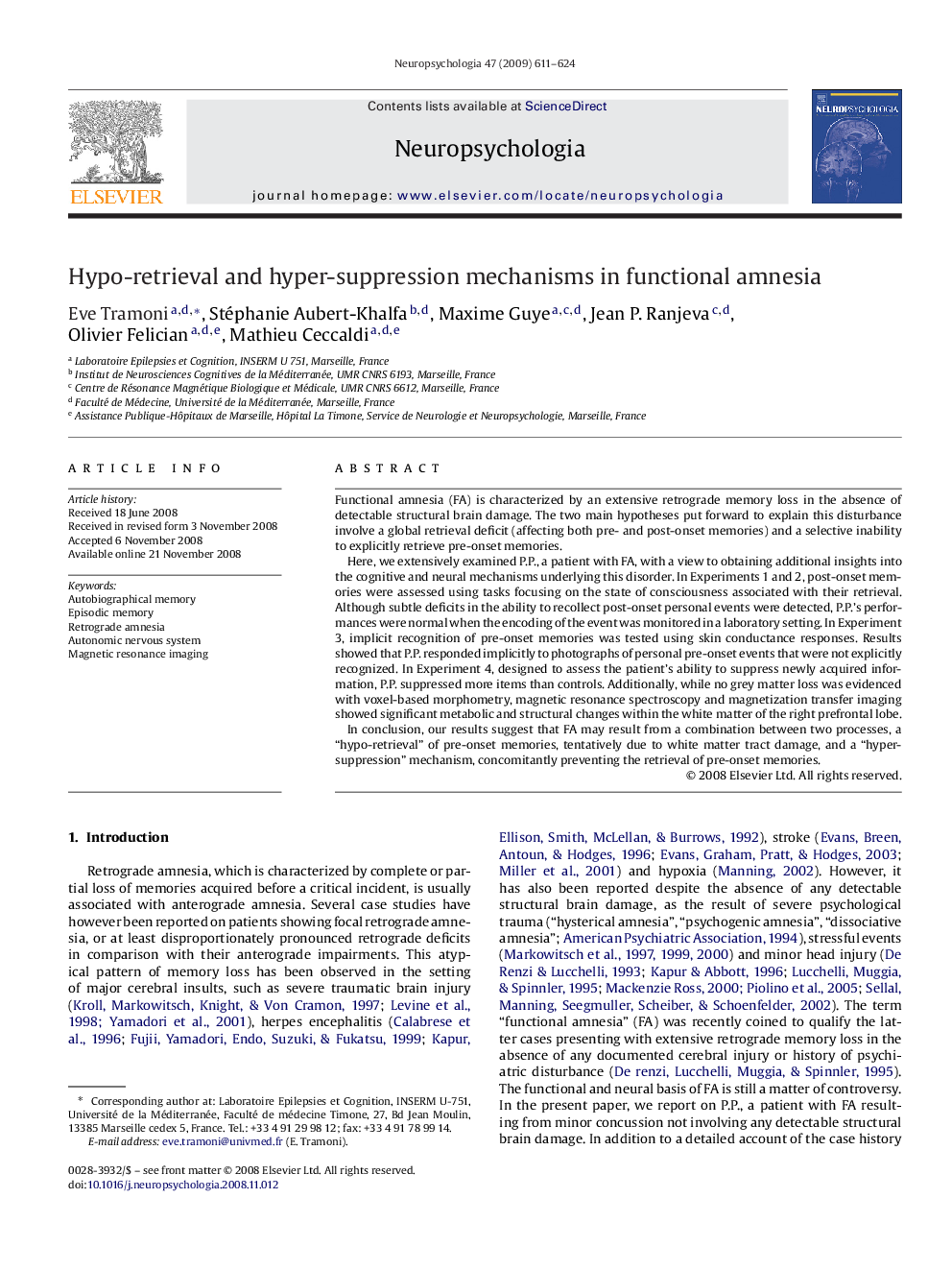| کد مقاله | کد نشریه | سال انتشار | مقاله انگلیسی | نسخه تمام متن |
|---|---|---|---|---|
| 945308 | 925777 | 2009 | 14 صفحه PDF | دانلود رایگان |

Functional amnesia (FA) is characterized by an extensive retrograde memory loss in the absence of detectable structural brain damage. The two main hypotheses put forward to explain this disturbance involve a global retrieval deficit (affecting both pre- and post-onset memories) and a selective inability to explicitly retrieve pre-onset memories.Here, we extensively examined P.P., a patient with FA, with a view to obtaining additional insights into the cognitive and neural mechanisms underlying this disorder. In Experiments 1 and 2, post-onset memories were assessed using tasks focusing on the state of consciousness associated with their retrieval. Although subtle deficits in the ability to recollect post-onset personal events were detected, P.P.’s performances were normal when the encoding of the event was monitored in a laboratory setting. In Experiment 3, implicit recognition of pre-onset memories was tested using skin conductance responses. Results showed that P.P. responded implicitly to photographs of personal pre-onset events that were not explicitly recognized. In Experiment 4, designed to assess the patient's ability to suppress newly acquired information, P.P. suppressed more items than controls. Additionally, while no grey matter loss was evidenced with voxel-based morphometry, magnetic resonance spectroscopy and magnetization transfer imaging showed significant metabolic and structural changes within the white matter of the right prefrontal lobe.In conclusion, our results suggest that FA may result from a combination between two processes, a “hypo-retrieval” of pre-onset memories, tentatively due to white matter tract damage, and a “hyper-suppression” mechanism, concomitantly preventing the retrieval of pre-onset memories.
Journal: Neuropsychologia - Volume 47, Issue 3, February 2009, Pages 611–624